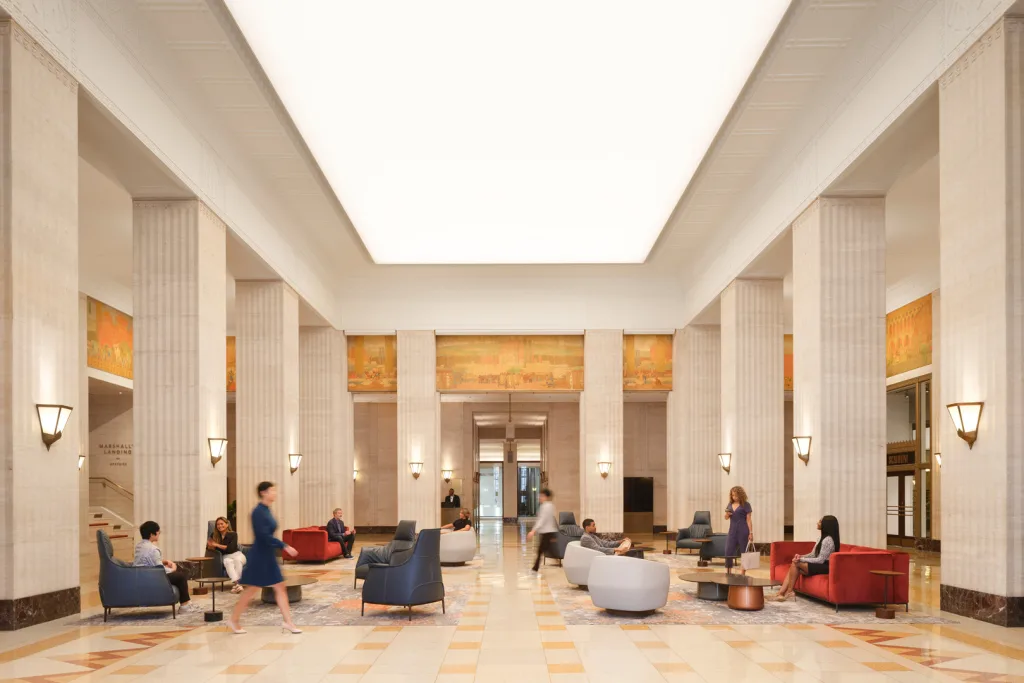- | 8:00 am
Your office can make you more productive. Here’s what ‘high performance’ office design looks like
A survey of 16,000 workers reveals what office design features help them work best.

In the aftermath of the pandemic, office design went through a frantic stage of adjustment. The 9-to-5 workday was totally upended, and once-necessary offices became optional, if not mostly avoided. Office designers were among those tasked with figuring out how to convince people to come back to their physical office spaces.
Now, with the pandemic effect mostly a bad memory, office design’s role has shifted once again. A new report from the global architecture and design firm Gensler looks at how offices are used and perceived around the world. The 2024 Global Workplace Study finds that workers are less concerned about whether or not they should go into the office, and more interested in how the office will help them do their work better.

The report is based on surveys with 16,000 workers in 15 countries and 10 industries. Gensler’s Research Institute has been studying and tracking trends in workplaces since 2005, but the past few years have been unprecedented in the ways that expectations around office space has changed. According to Gensler’s global director of workplace research Janet Pogue McLaurin, the focus has shifted to creating places that work better for workers while also helping them perform at their highest level.
“The people aspect has never been more important. There’s been a real shift from real estate metrics to people metrics,” McLaurin says. “It’s all about attracting and retaining the top talent.”

MEASURING OFFICE PERFORMANCE
Gensler has developed specific metrics to measure how offices are working for people. One focuses on workplace effectiveness and how the space physically supports work. Another measures the human experience of the workplace and how it evokes a sense of beauty and inspiration. Offices that rate well in both these measures are what Gensler calls “high-performing” workplaces.
“It’s like two halves. One is function, and the other’s how we feel,” says McLaurin. “Think about it almost like the head and the heart. You have to capture both and both have to work in concert in order for people to really perform.”
High-performing workplaces have shared factors, according to the research. Common spaces in high-performing workplaces include those for informal conversations, for video conferences, for focused concentration, and for relaxing or recharging. These types of spaces exist two to four times more often in high-performing workplaces compared to what rank as low-performing workplaces in Gensler’s metrics.

“If we start to create those environments, it’s going to help employers attract and retain the best talent,” McLaurin says. “It’s ultimately about helping people perform at their best.”
Survey respondents from high-performing workplaces report that their working environment improves the way their teams function, how they get along with their colleagues, and their overall productivity. These positive correlations were noted by more than 95% of respondents from high-performing workplaces, compared to only about two-thirds of respondents from low-performing workplaces.
This is exactly what the C suite cares about, says McLaurin. “Employers want to make sure they’re providing space that positively or very positively impacts individual, team, and organizational outcomes,” she says.
Creating a high-performing workplace will take more than just checking a few boxes, but this research makes the case for paying more attention to the types of environments workers are seeking. One surprising result from the survey is how few companies are actually trying to meet those needs. According to the report, less than a third of workplaces have been redesigned in the last three years.








































